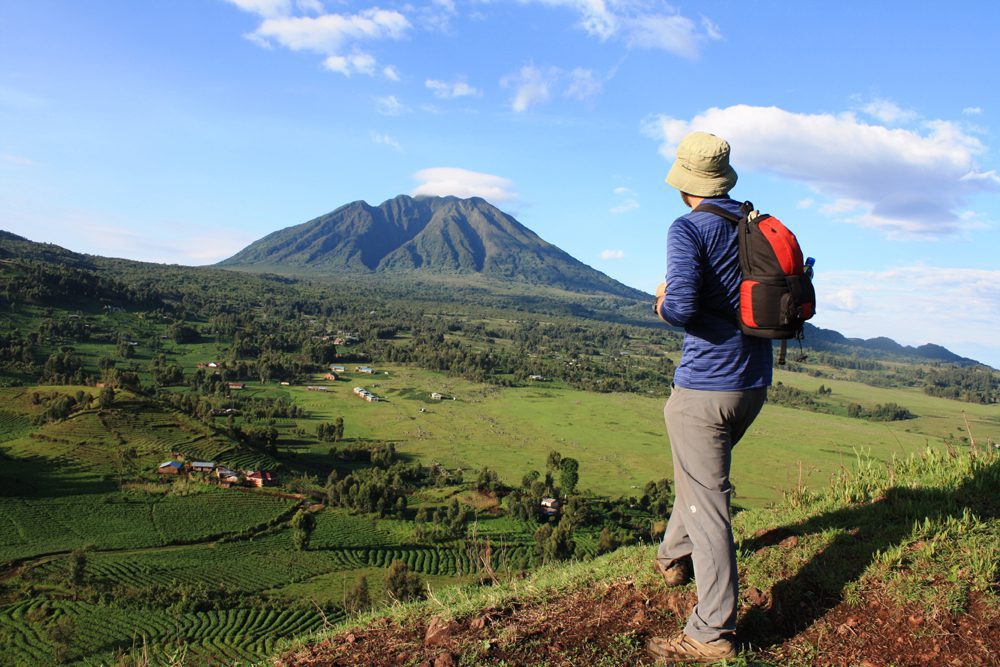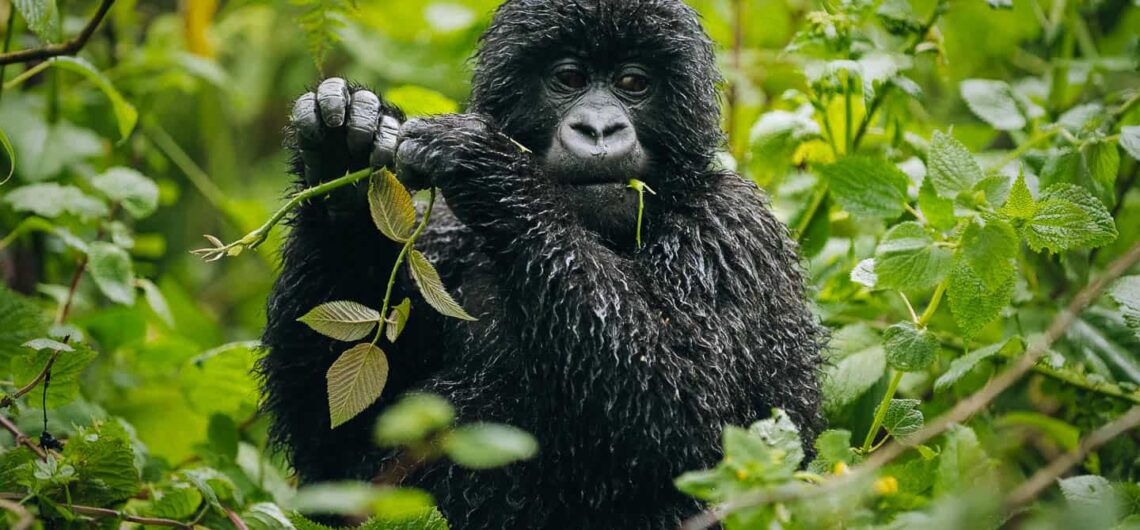Gorilla trekking in Rwanda: It is unforgettable and, according to some, even life-changing to have the chance to observe gorillas in their native environment. Small groups of visitors are led up bamboo-covered hills to spend a priceless and breathtaking hour just a few feet away from the friendly animals by knowledgeable trackers and guides. Encounters with gorillas as they go about their everyday lives are carefully regulated.
Gorilla trekking in Rwanda
Gorillas, the biggest species of extant ape, are found over much of the equatorial African rainforest. The gorilla species can be broadly divided into mountain gorillas and lowland gorillas.
The endangered mountain gorilla lives in the volcanic range that stretches over Rwanda, Uganda, and the Democratic Republic of the Congo. In Rwanda, gorilla tracking is risk-free and rather easy.
There are currently 604 mountain gorillas living in the Virunga Massif, making up about 1,000 total. Thanks to coordinated efforts by our governments, communities, and Organizations, the population is slowly growing.
The Volcanoes National Park is home to twelve completely habituated gorilla groups and a few more who have been habituated purely for scientific purposes. At least one silverback is present in the groupings, or soldiers, along with a number of juvenile girls and females.
A total of 604 mountain gorillas live in the Virunga Massif, according to the most recent count, which places their number in the wild at around 1,000. Because of cooperative efforts from our governments, communities, and NGOs, the population is gradually growing.
Twelve gorilla families, all of which are fully acclimated, as well as a few others that are only acclimated for scientific study, are currently residing in Volcanoes National Park. At least one silverback, as well as a number of girls and children, make up the groups, or soldiers.

When the visitors arrive at the Volcanoes National Park headquarters in Kinigi at 7 a.m., they are assigned to a family group that day based on fitness levels and given instructions on how to visit the gorillas.
Susa, Igisha, Karisimbi, Sabyinyo, Amahoro, Agashya, Kwitonda, Umubano, Hirwa, Bwenge, Ugyenda, and Muhoza are the names of the families.
It can take anywhere from 30 minutes to four or more hours to hike up to their various locations, which are all between 2,500m and 4,000m above sea level. There are porters ready to help out along the way and to carry items like cameras and backpacks.
10% of the money earned from the permits is distributed to the neighborhood to improve on the roads, schools, and health facilities. To ensure a peaceful coexistence, there is a compensation fund for local farmers in the event that gorillas harm their crops.
Several locals can find work in the gorilla tracking industry as rangers, trackers, porters, drivers, and employees of tourist lodges.
The mausoleum of Dian Fossey can be reached after a 30-minute drive from the park’s administrative building and a two- to three-hour climb through a forest to an elevation of more than 3,000 meters.
A particular occasion to visit the Volcanoes National Park is the annual Kwita Izina gorilla-naming ceremony. Guided tours preceding the main event provide visitors the chance to meet park employees and conservationists and to attend cultural evenings and a celebration in Musanze.
There is music, dancing, and discussion during the naming ceremony itself about Rwanda’s significant achievements in gorilla conservation as well as the enormous challenges that still lie ahead.
The Dian Fossey Gorilla Foundation International, The Gorilla Organization, International Gorilla Conservation Organization, Gorilla Doctors, and Wildlife Conservation Society are among the conservation groups currently active in Rwanda.


Comments